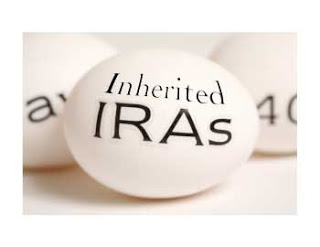In my tax law practice, I often counsel and represent individuals and businesses with past and current tax problems. When I say “tax problems”, I mean they owe back taxes and/or they have not been filing tax returns. The start of a new tax year provides these people and businesses the opportunity to start the year off correctly and to stop the bleeding from the past mistakes.
One of the biggest mistakes I see with troubled taxpayers is that they fail to file tax returns because they do not have the money to pay the tax. This is always a bad decision. From an income tax standpoint, failing to file an income tax return timely results in a penalty equal to 5% per month capped at 25% of the tax shown as owing on the return. By simply not filing the return, the taxpayer’s liability typically has grown by 25% plus interest. Further, by failing to file the return, the statute of limitations for assessment and collection has not started to run and the taxpayer has only delayed the possible resolution of their problem.
Another big mistake I see with troubled taxpayers is that when they have a past tax problem, they often try to pay off the past tax problem at the expense of their current taxes. This is typically a bad decision because by the time the old tax problem is taken care of, they have already reached the maximum liability for penalties and are now liable for new penalties for the current tax year that has not been paid timely. This becomes a vicious cycle that needs to be stopped. Accordingly, I often counsel that the first thing that needs to be addressed is that current taxes need to be deposited and paid so the past problem is now on a road to resolution and the problem is no longer growing with the addition of new tax years owing.
Once a taxpayer is on better footing and making their estimated tax payments or withholdings, the resolution of back tax problems will take one of four paths or a combination of them. The first path is usually not a feasible option, but it is one nonetheless. That option is to pay the back amount in a lump sum payment and be done with it. If I meet with a taxpayer that has substantial equity in a residence or investment property that could pay off their past tax problem, I recommend a refinance of the property to pay off the taxes. The simple reason is that depending on the amount of the liability, the IRS is not going to grant a payment plan when there is sufficient equity in assets to pay off the liability.
Another path that can be taken to resolve a past tax problem is an installment payment plan. The IRS has a ten year statute of limitations for collection but the IRS aims to have a tax liability paid off as fast as possible and in most cases not longer than a five year payment plan. Whether or not a taxpayer can easily obtain a payment plan or is going to experience difficulties is a function of the amount they owe, whether they are in current compliance with filings and estimated payments, and what their assets comprise.
Installment payment plans are obtainable but it is important to know the rules so you are not steamrolled by the IRS and forced into a payment plan you will ultimately fail in satisfying.
A further path that can be taken to resolve a tax problem is submitting an offer in compromise to settle your tax debts for an amount less than what you owe. If someone tells you they can settle your tax debts for ten cents on the dollar without knowing your assets and income, you are about to be scammed if you believe them. The offer in compromise program is available, but it is not for everyone. Simply stated, the program looks at the value of your assets and the value of your income stream. If the value of your assets exceeds your tax liability, typically, you are not going to qualify for the program. If your income is such that the IRS can reasonably expect to receive payments from you over a number of years to satisfy your liability, then a successful offer submission will not be likely. The rules for offers in compromise are substantial and you need to know them to successfully negotiate an offer with the IRS.
Lastly, a troubled taxpayer who owes income taxes can file bankruptcy to discharge those taxes. However, whether or not the taxes are discharged will depend on how long the taxes have been assessed and how much money a taxpayer makes. If a taxpayer is above the income means test in their county, they will be forced into a chapter 13 to repay their tax debts, and other debts, over time. For timely filed income tax returns, the income taxes will need to have been assessed for a period of three years to be dischargeable. For late filed income tax returns, the taxes will have to have been assessed for at least two years and the due date of the tax return being at least three years before the date of filing the bankruptcy petition. For additional assessments on audit, the two above rules have to be satisfied plus the bankruptcy petition cannot be filed sooner than 240 days after the assessment. Keep in mind, the bankruptcy trustee will also review your assets to see if there is anything available to the trustee to sell to raise money for the creditors. However, bankruptcy is sometimes an option.
Back tax problems can be resolved. The first step to resolve a back tax problem is to acknowledge there is a problem and seek proper counsel on how to resolve it. Remember, the IRS is seeking to be paid just like any other debt collector, except they have much stronger enforcement tools. Make sure you arm yourself with the knowledge in how to deal with the IRS or you hire a representative that is knowledgeable in tax law.




